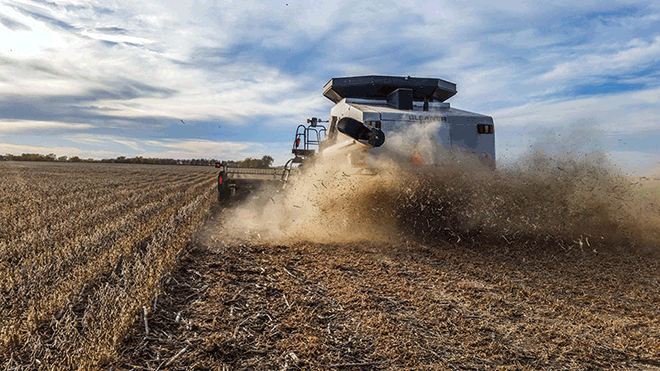Contact: +91 99725 24322 |
Menu
Menu
Quick summary: Learn about the critical role of crop residue management in sustainable agriculture with our informative blog. Discover the benefits of this practice in reducing soil erosion, improving soil health, and enhancing crop yields. Our expert insights and strategies will help you implement effective crop residue management techniques for a more sustainable and profitable farming future. Read on to learn more about the importance of crop residue management in sustainable agriculture.

One of the most important factors in sustainable agriculture is the proper management of crop residues. Crop residues refer to the plant materials left on the field after harvest, such as stalks, leaves, and stems. The way in which farmers manage these residues can have a significant impact on the environment and the productivity of the land.
The role of crop residue management in sustainable agriculture is crucial. Proper management of crop residues can provide several benefits for farmers and the environment, such as improving soil health, reducing greenhouse gas emissions, and providing a renewable energy source. By adopting sustainable agriculture practices, farmers can contribute to conserving natural resources and promoting economic viability for their communities. It is time for all of us to recognize the importance of sustainable agriculture practices and support farmers in their efforts to build a better and more sustainable future for everyone. Let us look at the benefits of crop residue management, what are the techniques adopted, importance of sustainable practices and the challenges faced.
According to FAO, about 5 billion tons of crop residues are generated globally each year.
Crop residue management has numerous benefits for both farmers and the environment. A few of them have been listed below:

In summary, following crop residue management practices can lead to numerous benefits for farmers, the environment, and society as a whole. By properly managing crop residues, farmers can improve soil health and fertility, reduce erosion, conserve water, reduce greenhouse gas emissions, and create additional sources of income.
There are several techniques that farmers can use to manage crop residues effectively. One of the most common methods is no-till farming, where the soil is left undisturbed after planting, and crop residues are left on the surface of the soil. This helps to retain moisture and nutrients in the soil and prevents erosion. Another technique is mulching, where crop residues are spread on the soil surface to conserve moisture and suppress weed growth. Here are some common techniques for crop residue management:
It is important to note that the appropriate technique for crop residue management may depend on various factors, including the specific crop, soil type, climate, and the goals of the farmer. A combination of different techniques may also be used to maximize the benefits of crop residue management while minimizing any negative impacts.
Farmers can also use crop residues for animal feed or bedding, which can reduce the cost of feed and bedding and provide a source of income for farmers. Additionally, crop residues can be used for energy production, such as biogas or biofuels, which can provide a renewable energy source for communities.
Adopting sustainable agriculture practices is more critical now than ever before. With the world’s population expected to reach 10 billion by 2050, it’s vital that we find innovative and sustainable ways to feed the world’s population. Crop residue management is a step in the right direction towards achieving this goal. By managing crop residues effectively, farmers can reduce their environmental impact and increase their profitability. Not only that, but sustainable agriculture practices can also promote social and economic development in rural communities.
Sustainable agriculture practices can also help combat climate change. Agriculture is responsible for about 25% of global greenhouse gas emissions. By adopting sustainable agriculture practices, farmers can reduce their carbon footprint and mitigate the impacts of climate change. Furthermore, sustainable agriculture practices can help reduce the use of synthetic fertilizers and pesticides, which can have adverse effects on the environment and human health.
Despite the numerous benefits of sustainable agriculture practices, there are some challenges in implementing them.
Addressing these challenges require a collaborative effort from farmers, policymakers and other stakeholders to develop innovative solutions and spread the adoption of these practices.
In conclusion, crop residue management is an essential component of sustainable agriculture. Proper management of crop residues can improve soil health, reduce greenhouse gas emissions, and provide a renewable energy source. Farmers can use various techniques to manage crop residues, such as no-till farming, mulching, or using residues for animal feed or energy production. By adopting sustainable agriculture practices, farmers can contribute to conserving natural resources and promoting economic viability for their communities.
Moreover, sustainable agriculture practices can help promote biodiversity and contribute to the conservation of natural resources. By managing crop residues effectively, farmers can provide habitat for beneficial insects and microorganisms, which can help control pests and reduce the need for pesticides. Additionally, sustainable agriculture practices can help conserve water resources and protect water quality by reducing soil erosion and nutrient runoff. In this way, sustainable agriculture practices can help protect the environment for future generations.
